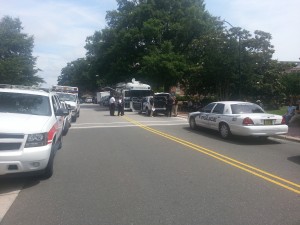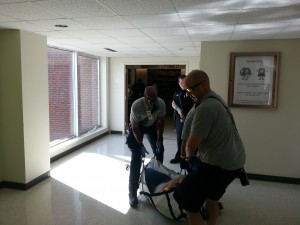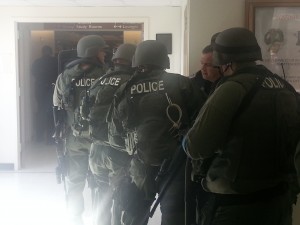“We have casualties: 5 Red, 3 Yellow, 2 Green”

No, the blog title does not refer to the unending flow of M&Ms available in SAS break rooms throughout the Cary campus. Rather, it refers to my involvement in an emergency drill at UNC held earlier this week. On Wednesday, I observed an emergency drill exercise held at Davis Library (I promise, the M&M connection is forthcoming). My summer employer—SAS Corporate Services/Security & Safety—maintains strong relationships with local law enforcement and emergency response teams, which granted me the opportunity to participate in the event as an outside observer. The exercise involved a simulated “live shooter” emergency, mass casualties, hostage taking and negotiating, in addition to the standing up of multi-jurisdictional emergency operations command posts.

I saw firsthand some of the tactics employed in the event of a chaotic emergency situation. The extent of the chaos, as gleaned from radio traffic overheard during the event, involved ten patients—five of which were considered “code red” (life threatening injuries sustained), three were “code yellow” (moderate to serious injuries sustained), and two were “code green” (non-serious injuries sustained)— injured by a gunman who had subsequently locked himself in an 8th floor Davis reading room.

Clearly, this emergency drill was no pushover as it simulated worst-case scenarios affecting decision points up and down the chain of command. The events also involved the use of rapid, on-the-scene mass casualty triaging of patients and quick communication among responding agencies to address not only law enforcement and security concerns, but also rescue efforts.
Ultimately, the key takeaway for me was witnessing the generally seamless coordination and communication among the various agencies responding to this mock emergency. This isn’t always the case as communication is generally viewed as a key obstacle during disaster and emergency situations. One way to minimize communication breakdowns during an emergency includes building inter-agency relationships and simulating mock emergency situations (such as the one I participated in) to rehearse for an effective response. Here, no fewer than ten agencies were represented at the event in either an observer or “game player” role which allowed for a healthy exchange of best practices and tactical tweaks aimed at improving overall response.
Fortunately, I avoided being taken hostage and, instead, was able to return to the friendly confines of SAS where I could debrief about lessons learned and consider possible tweaks to SAS response protocols all while enjoying free M&Ms!


